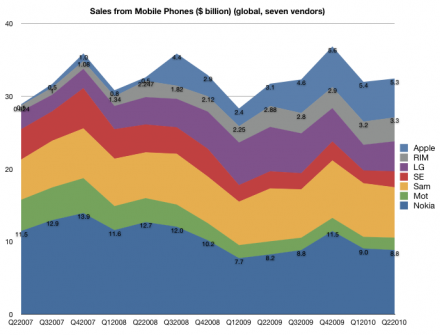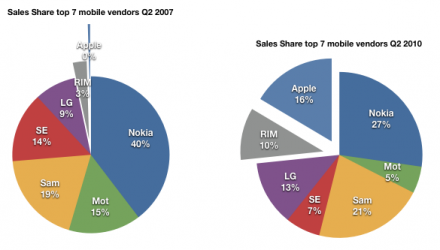Juniper Networks(R) (
JNPR 28.10, +0.32, +1.15%) today announced that Internet Initiative Japan Inc. (IIJ) (
IIJI 6.94, +0.20, +2.97%) (TSE1: 3774), one of Japan’s leading Internet access and network solutions providers, has adopted Juniper Networks EX Series Ethernet Switches in its data centers to support its newly developed cloud services under the name IIJ GIO. By deploying Juniper’s switches, IIJ was able to build the networking component of its IIJ GIO virtualized service platform using a simplified two-layer model that reduces cost, complexity and latency while increasing manageability and flexibility.
IIJ offers customized private cloud services and public services — including the IIJ GIO Hosting Package Service, IIJ GIO Remote Office Service and IIJ GIO Storage Service — from data centers interconnected directly through its high-volume backbone network. Each data center has thousands of servers and large storage pools that are harnessed through the IIJ GIO platform.
“In order to offer cloud-based business infrastructure services, it is critical to build a robust, highly reliable platform that can rapidly respond to demand,” said Kazuhiro Tokita, executive managing officer of IIJ. “Our decision to adopt Juniper Networks switches as the networking component of the IIJ GIO platform was based on a number of factors including carrier-class performance and reliability, low cost of ownership, a migration path to 100 Gigabit Ethernet and — critically for cloud computing applications — simultaneous support for large numbers of VLANs.”
Juniper Networks EX3200 fixed-configuration Ethernet switches are deployed at the network edge in IIJ’s data centers, connecting large numbers of virtual LANs to the server and storage farms, with each device linked via Gigabit Ethernet to a pair of edge switches. Juniper’s EX8200 chassis-based switches are at the core of the IIJ GIO data center networks, supporting redundant 10 Gigabit Ethernet links to the EX3200 switches and creating a highly resilient low-latency connection between the cloud’s CPU/memory and storage resources.
The core switches also connect to Juniper Networks MX Series Universal Edge Routers, which IIJ has had in place for a number of years to support its high-performance backbone network. With Junos(R), Juniper’s single-source operating system, running across the data center switching and routing devices, IIJ is able to streamline cloud service provisioning so its customers can start using their selected environments less than 15 minutes after completing a contract.
“IIJ fully understands that simplifying and automating the data center network is critical to cloud computing,” said Rene Link, vice president of service provider marketing, Juniper Networks. “Building the IIJ GIO service platform on a simplified two-layer network — without compromising performance — lowers IIJ’s operational, capital and environmental costs while reducing complexity and improving efficiency. And with Junos running the network infrastructure, IIJ is in a position to increase efficiency even more through implementation of Junos Space applications.”
Junos Space, running on top of the Junos operating system, is an open, extensible software platform for network automation that helps eliminate complexities, streamline operations, and improve management controls for a better network. Out-of-the-box and customized Junos Space applications, accessed through a web browser, can quickly and accurately manage tasks — such as provisioning — that would traditionally take a combination of staff, tools, time and money to achieve in a legacy data center.
About Juniper Networks From devices to data centers, from consumers to the cloud, Juniper Networks delivers innovative software, silicon and systems that transform the experience and economics of networking. The company serves more than 30,000 customers and partners worldwide, and generated more than $3 billion in revenue over the last year. Additional information can be found at
www.juniper.net.
Juniper Networks and Junos are registered trademarks of Juniper Networks, Inc. in the United States and other countries. The Juniper Networks and Junos logos are trademarks of Juniper Networks, Inc. All other trademarks, service marks, registered trademarks, or registered service marks are the property of their respective owners.
http://www.cloudtweaks.com/2010/08/internet-initiative-japan-simplifies-cloud-data-centers-with-juniper-networks/
Join Us:
http://bit.ly/joincloud











 but it also has a good implementation story in the automotive industry that I used to cover in my previous job. As the automotive industry recovers, OEMs can surely use a domain-focused solution to help them take advantage of customers coming to replace their age-old vehicles with new cars that they have been putting off buying for a while now.
but it also has a good implementation story in the automotive industry that I used to cover in my previous job. As the automotive industry recovers, OEMs can surely use a domain-focused solution to help them take advantage of customers coming to replace their age-old vehicles with new cars that they have been putting off buying for a while now. Who would have thought that headline would ever appear? Well it has, and if you count the
Who would have thought that headline would ever appear? Well it has, and if you count the 



